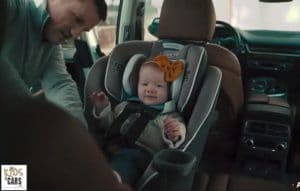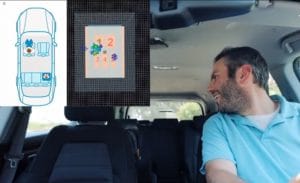KidAndCars.org shows new tech that meets Hot Cars Act.
KidsAndCars.org hosted a webinar showing tech available now that could cut hot car child deaths.
Safety advocates pushing for new technology that would alert drivers if they leave a child in their vehicle after leaving it say the new devices could lower the cost of sensor technology in current and coming vehicles. KidsAndCars.org rolled out examples of new technology that could be installed in vehicles right now that can determine if a baby or small child has been left in a vehicle and trigger a series of alarms and warnings to prevent that child from dying or being injured due to exposure in an overheated vehicle. The group also promoted the Hot Cars Act that was passed by the U.S. House of Representatives as part of the recent Moving Forward Act (H.R. 2). It now needs Senate approval and a presidential signature before it mandates technology that issues audio and visual warnings inside and outside the vehicle. “We simply cannot let another summer pass without making the life-saving and desperately needed technology a part of the solution to save the lives of innocent babies. Every day that we delay in advancing these cost-effective detection technologies means children are at risk of needlessly dying.” said Janette Fennell, president of KidsAndCars.org during the webinar. The organization has teamed with other safety-oriented groups to advocate for a variety of tech-oriented issues in the auto industry, such as pushing for further testing of autonomous vehicles before they drive on public issues.
Vayyar Imaging’s child detection system can sense if a child is breathing — under a blanket.
The hot car issue is at the fore of many efforts because an average of 39 children die annually after being trapped inside a hot vehicle. However, the last two years have seen new records of 54 and 55 deaths. The organization believes automakers need to do more to prevent these fatalities. More importantly, they want a technology that works well, unlike many of the systems that are currently in place. The groups want it though of like other safety components in a vehicle: they should work — period. “The voluntary agreement notes that a system must ‘consider the potential presence’ of an occupant and provide an alert when there is ‘the potential presence’ of an occupant,” said Shaun Kildare, Senior Director of Research at Advocates for Highway and Auto Safety. “This allows for technology which does not detect, but rather essentially guesses whether there may be a child left in a vehicle.” He continued, “You wouldn’t want your brakes to potentially work when you press them.” The groups did point out that Hyundai’s Ultrasonic sensor-based technology would meet the requirements set forth in the Hot Cars Act. Hyundai, and its sister auto brand Kia, began offering it last year after introducing it in 2017. Other automakers have systems in place as well, including General Motors which has offered its Rear Seat Reminder on all of its four-door sedans, trucks and SUVs starting with the 2019 model year as well.

KidAndCars is working with a variety of safety advocacy groups.
The group is working with four automotive technology companies to advance the cause of getting new sensor-based systems in future vehicles that can better determine if there’s a baby or simply an inanimate object in the car. Each of the four, Aptiva, IEE Sensing, Caaresys and Vayyar Imaging, all offered videos promoting their technology, outlining how it can help automakers meet the mandate of the Hot Cars Act as well as make things easier as they move toward autonomous vehicles, especially on the cost front. Ian Podkamien, Vayyar’s director of business development, said its iteration of the tech is a “very, very affordable element” of the system, adding it would actually save U.S. automakers money. The consensus of the calls experts was that it could be cost neutral once mandated because of the economies of scale. The problem isn’t just a problem in the U.S., according to the organization, noting its been tracking the problem in 56 countries around the world and it’s on the rise in most of those as well.



